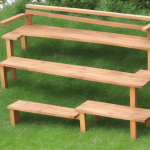In the dynamic and competitive world of retail, how you present your products can make or break your success. A well-thought-out display can create a buzz, attract customers, and ultimately drive sales. From window displays to in-store product placements, there are many ways to showcase your items in a way that speaks to your brand identity and meets your customers’ needs. This article explores innovative product display techniques that small retail stores can leverage to make a big impact.
The Power of Window Displays
Window displays are the retail equivalent of a movie trailer. They provide a taste of what’s inside, enticing potential customers and encouraging them to step inside the store. A creative and well-planned window display can help your business stand out from the crowd, draw attention to your products, and set the overall mood and tone for your brand.
En parallèle : What Are the Strategies for Small Businesses to Implement AI for Customer Insights?
When designing your window display, consider what story you want to tell. Are you promoting a particular product, celebrating a season or holiday, or presenting a broader brand message? The answer will guide your design decisions. If you’re a clothing store, for instance, you might create a window display featuring your latest collection styled in a way that evokes a certain lifestyle or mood. Alternatively, a bookstore might feature a window display around a specific theme or author.
Another key element of a successful window display is regular updates. Changing your window display regularly keeps things fresh and gives repeat customers something new to discover each time they pass by your store. It also enables you to highlight different products, trends, or themes throughout the year.
En parallèle : How Can Small Businesses Optimize Their Email Marketing Campaigns for Higher Engagement?
Creating Engaging In-Store Displays
While window displays draw customers into your store, in-store displays play a crucial role in guiding their shopping journey once they’re inside. They help customers navigate the store, create a cohesive shopping experience, and influence purchasing decisions.
Visual merchandising is an art and science that involves strategically arranging products to maximize sales. This could involve grouping related products together, creating color-themed displays, or using signage to highlight sales or product features.
For example, if you run a cosmetics store, you could create a display featuring all the products someone would need to achieve a certain look. This not only provides inspiration to customers, it also encourages them to purchase multiple items.
In-store displays can also incorporate technology for a more interactive experience. Digital displays can showcase product information, customer reviews, or how-to videos, for example.
Designing a Store Layout that Enhances the Customer Journey
Your store’s layout plays a pivotal role in the customer experience. It should be designed to accommodate your customers’ shopping behaviors and preferences, while also showcasing your products in the best possible light.
For example, you might use a free-flowing layout that encourages customers to wander and discover products organically. This works well for stores with a diverse range of products, or those that want to create a more relaxed shopping environment.
Or, you could use a grid layout, which is often used in grocery and convenience stores. This layout organizes products into clear, easy-to-navigate aisles, making it easy for customers to find what they’re looking for.
Regardless of the layout you choose, it’s essential to keep it clean and uncluttered. A crowded store can be overwhelming and off-putting for customers, and can make your products difficult to find.
Promoting Your Products Through Creative Merchandising
Creative merchandising is an excellent way to draw attention to your products and make your store more memorable. This could involve imaginative product displays, themed decorations, or interactive elements that engage your customers.
One creative merchandising technique is to create a ‘retail theater’ experience. This involves using lighting, music, scent, and visual design to create a unique and immersive shopping environment.
Another technique is to use unexpected elements in your displays. This could be anything from using unconventional materials to create your displays, to showcasing your products in unusual ways. This not only draws attention to your products, but also creates a talking point that can help to generate buzz around your store.
Harnessing the Power of Impulse Purchases
Impulse purchases can significantly boost your retail sales, and there are several effective ways to encourage these spontaneous buys.
One technique is to strategically place impulse items near the checkout. Customers waiting in line to pay are more likely to add these small, inexpensive items to their basket. You could also place impulse items near your most popular products.
Another tactic is to create a sense of urgency around these items. This could be done by highlighting a limited-time offer, or by creating a ‘grab-and-go’ display of products that are quick and easy to add to a shopping basket.
Remember, the most effective product displays are those that resonate with your customers and reflect your brand identity. By using these innovative display techniques, you can create a retail environment that captivates your customers and inspires them to buy.
The Role of Technology in Enhancing Product Display
In today’s digital age, small retail stores have an array of innovative technological tools at their disposal to enhance their product displays and create a more interactive shopping experience. Whether it’s through the use of digital signage, augmented reality (AR), or interactive kiosks, technology can significantly elevate your product display strategy and attract more foot traffic to your store.
Digital signage, for instance, is a cost-effective way to display products, promotions, or any other relevant content in a dynamic and eye-catching manner. It allows you to easily update your content, tailor your messaging to specific audiences, and even schedule content for different times of the day. You can use digital signage to display engaging product videos, showcase customer testimonials, or highlight limited-time offers.
Augmented reality (AR) is another technology that’s making waves in retail. It allows customers to virtually interact with your products, creating a memorable and engaging shopping experience. For example, a furniture store might use AR to allow customers to virtually place furniture in their own homes to see how it looks before making a purchase, or a clothing store might allow customers to virtually try on outfits using an AR mirror.
Interactive kiosks and touchscreens can also enhance the shopping experience by providing customers with useful product information at the point of sale. They can feature how-to videos, product specifications, or even customer reviews. This not only helps customers make informed purchasing decisions but also adds an element of interactivity to your displays.
Incorporating technology into your product displays can not only attract more customers but also increase sales and improve the overall shopping experience.
Conclusion: The Art and Science of Retail Display
In conclusion, creating an effective retail display is both an art and a science. It requires a deep understanding of your customers, your products, and your brand. It involves careful planning, creative thinking, and constant adaptation to changing consumer trends and preferences.
From eye-catching window displays that draw customers in, to engaging in-store displays that guide them through their shopping journey, every aspect of your retail display strategy plays a critical role in your store’s success. Innovative methods such as using creative merchandising techniques, designing a customer-centric store layout, and harnessing the power of technology can significantly elevate your product displays.
Regularly updating your displays can keep your store fresh and interesting for repeat customers, while creative display ideas can help your store stand out from the crowd. Moreover, creating a sense of urgency or strategically placing products can encourage impulse purchases and increase sales.
However, it’s important to remember that the customer experience should always be at the heart of your retail display strategy. Every element of your display design should be geared towards making the shopping experience as enjoyable, easy, and efficient as possible for your customers. After all, a happy customer is a returning customer.
In the dynamic world of retail, the importance of effective product displays cannot be overstated. Done right, they can be a powerful tool to attract customers, showcase your products, and ultimately drive sales and success for your small retail store.










